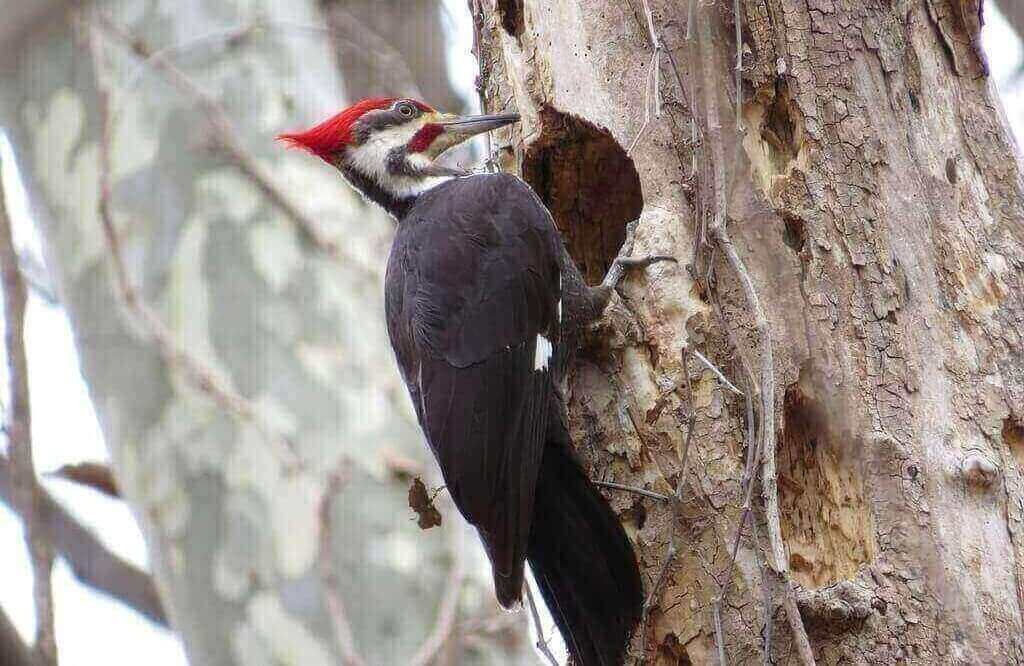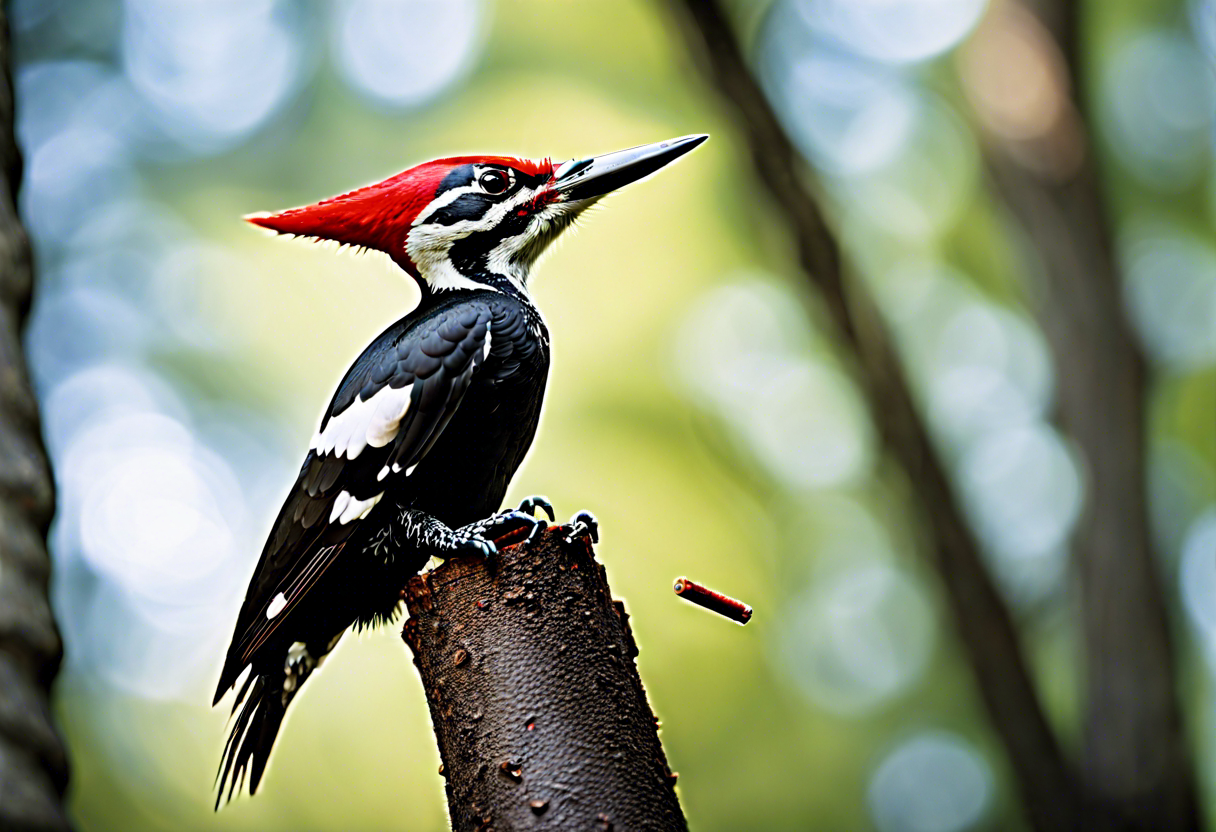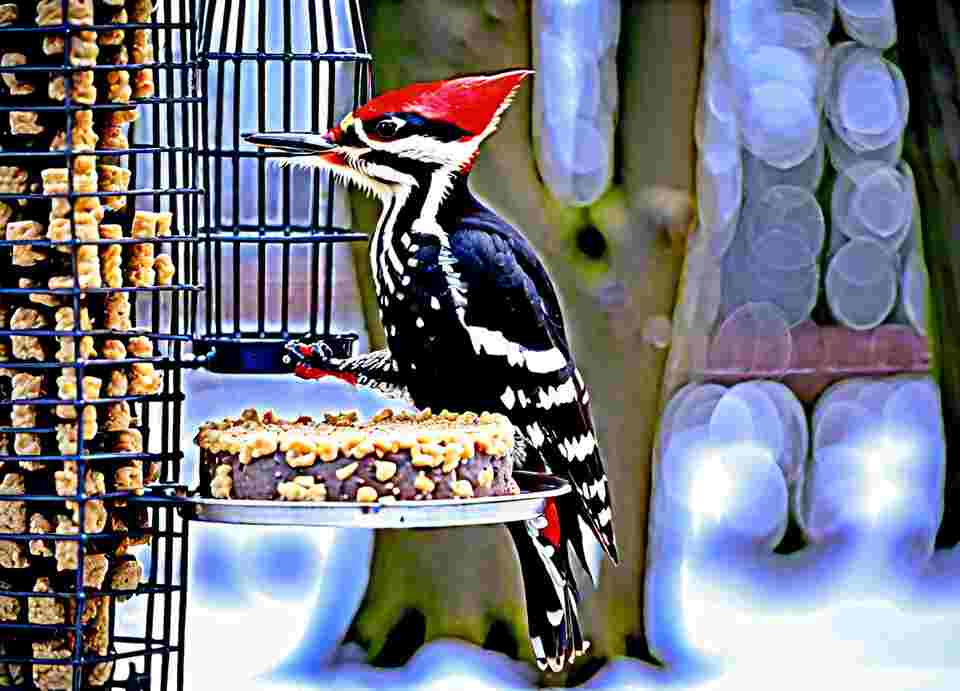Hey there! Ever wished for some lively visitors in your yard? Well, today’s all about bringing in the big stars – Pileated Woodpeckers! They’re like the celebrities of the bird world, and I’ve got some easy tricks to make them feel cozy right in your backyard. So, let’s roll out the welcome mat and turn our yard into the ultimate bird hotspot together!
Table of Contents
Key Takeaway:
- Create a habitat like mature forests with dead trees and lush vegetation.
- Offer ample food sources like insects found in decaying wood.
- Provide suitable nesting sites in large trees with cavities.
- Minimize human disturbance to maintain a peaceful environment.
- Transform your yard into a haven for these captivating birds!
Enticing Pileated Woodpeckers to Your Yard
Attracting Pileated Woodpeckers to Your Yard
Pileated woodpeckers are a sight to behold, with their striking red crests and impressive size. These majestic birds are not only visually stunning but also play a vital role in the ecosystem, helping to control insect populations and aerate the soil. If you’re fortunate enough to have a yard, you can take steps to attract these magnificent creatures and enjoy their presence.
Providing the Right Habitat
Pileated woodpeckers prefer forests and woodlands, but they can also thrive in urban and suburban areas if the proper habitat is available. To attract these birds, you’ll need to create an environment that meets their basic needs. Start by ensuring your yard has mature, dead, or dying trees, as these provide the ideal nesting sites and a steady supply of food.
Offering a Varied Diet
Pileated woodpeckers are omnivores, feeding on a variety of insects, nuts, and fruits. To cater to their diverse dietary needs, consider installing a platform feeder or suet feeder in your yard. Offer a mix of suet, nuts, and fruits to provide a well-rounded menu. Be sure to keep the feeders clean and well-stocked to ensure a consistent food source.
Providing a Water Source
In addition to a reliable food source, pileated woodpeckers also require a clean, consistent water supply. Consider installing a birdbath or a shallow dish filled with clean, fresh water. Placing the water source near dense vegetation or a tree canopy can provide the birds with a sense of security and protection.
Creating Nesting Opportunities
Pileated woodpeckers are cavity nesters, meaning they build their nests in the hollows of trees. To encourage these birds to take up residence in your yard, leave standing dead trees or stumps whenever possible. If you must remove a tree, consider leaving a portion of the trunk or a large branch intact to provide a suitable nesting site.
Minimizing Disturbances
Pileated woodpeckers are relatively shy and can be easily frightened by loud noises or sudden movements. To create a welcoming environment, try to minimize any potential disturbances in your yard. Avoid using power tools or mowing the lawn during the breeding season, and keep pets indoors when possible.
Patience and Observation
Attracting pileated woodpeckers to your yard may take time and patience. It’s important to observe the natural behavior of these birds and make adjustments to your yard as needed. Over time, you may be rewarded with the sight of these magnificent birds foraging, nesting, and raising their young in your very own backyard.
By providing the right habitat, food, water, and nesting opportunities, you can increase your chances of attracting pileated woodpeckers to your yard. Remember to be patient, observe their behavior, and make any necessary changes to create a welcoming environment for these incredible birds.
Providing the Ideal Habitat for Pileated Woodpeckers
Attracting Pileated Woodpeckers: Creating the Ideal Habitat
Pileated woodpeckers are majestic birds that can bring a sense of wonder and excitement to any yard. These large, striking birds are known for their distinctive red crest and their impressive ability to excavate large, rectangular-shaped holes in trees while searching for food. If you’re interested in attracting these magnificent creatures to your outdoor space, there are several key elements you can focus on to create the ideal habitat.
Providing Ample Food Sources
Pileated woodpeckers are primarily insectivores, feeding on a variety of insects and larvae found within decaying or dead trees. To cater to their dietary needs, ensure that your yard has an abundance of dead or dying trees, logs, and stumps. These provide a rich source of food for the woodpeckers, as they use their powerful beaks to extract the insects and larvae hidden within.
Additionally, consider supplementing their natural food sources by offering suet feeders or providing a steady supply of high-energy nuts and seeds. This can be especially helpful during the winter months when their natural food sources may be more scarce.
Creating Nesting Opportunities
Pileated woodpeckers are cavity nesters, meaning they excavate their own nesting cavities in large, dead or decaying trees. When selecting trees for your yard, look for ones that are at least 12 inches in diameter and have a certain degree of softness or decay, as these will be the easiest for the woodpeckers to excavate.
Leaving some standing dead trees or snags in your yard can provide excellent nesting opportunities for these birds. If you don’t have any suitable trees, you can also consider installing artificial nest boxes that mimic the natural cavities they would seek out.
Maintaining a Diverse Habitat
Pileated woodpeckers thrive in areas with a mix of mature, deciduous forests and open woodlands. Maintaining a varied habitat that includes both dense, wooded areas and more open spaces can provide the ideal combination of food sources, nesting sites, and foraging opportunities.
Avoid overly manicured or landscaped yards, as these can lack the diversity and natural elements that pileated woodpeckers prefer. Instead, consider allowing certain areas of your yard to grow more wild and untamed, providing a more natural and inviting environment for these birds.
Minimizing Disturbances
Pileated woodpeckers are relatively large and vocal birds, and they can be quite sensitive to human activity and disturbances. To create a welcoming environment, try to minimize any loud noises, sudden movements, or excessive foot traffic in the areas where you hope to attract them.
Consider placing any feeders in more secluded areas of your yard, away from high-traffic zones. Additionally, avoid pruning or removing trees during the breeding season, as this can disrupt the woodpeckers’ nesting activities.
By focusing on these key elements – providing ample food sources, creating nesting opportunities, maintaining a diverse habitat, and minimizing disturbances – you can take meaningful steps towards attracting pileated woodpeckers to your yard and providing them with the ideal habitat they need to thrive.
Conclusion
Pileated woodpeckers are undoubtedly one of the most captivating and iconic birds that can grace a backyard. Their striking appearance, with their bright red crested heads and large, powerful bills, make them a sight to behold. By taking the time to create an inviting habitat and offering the right food sources, you can increase your chances of attracting these magnificent birds to your own outdoor space.
The key to enticing pileated woodpeckers is to provide the ideal environment that mimics their natural habitat. This means having a good mix of mature, decaying trees that can serve as a plentiful food source, as well as dense, wooded areas that offer shelter and nesting sites. Leaving dead or dying trees standing, or strategically placing logs and stumps, can go a long way in creating the perfect setup for these birds.
In addition to the right habitat, offering the appropriate food can be a major draw for pileated woodpeckers. These birds are primarily insectivores, relying on a diet of wood-boring beetles, ants, and other insects that can be found in rotting wood. Providing suet feeders, particularly ones with insects or nuts embedded in them, can be an excellent way to supplement their natural food sources and encourage them to visit your yard regularly.
Another key factor in attracting pileated woodpeckers is maintaining a peaceful, undisturbed environment. These birds are sensitive to human activity and may avoid areas with too much noise, movement, or other potential threats. Keeping your yard quiet, limiting the use of power tools or machinery near potential nesting sites, and minimizing the presence of pets can all help create a more welcoming atmosphere for these skittish birds.
With patience and persistence, you can create a haven in your own backyard that pileated woodpeckers will find irresistible. By providing the right mix of mature trees, abundant food sources, and a peaceful, undisturbed environment, you can increase your chances of spotting these magnificent birds gracing your property.
Of course, it’s important to keep in mind that attracting pileated woodpeckers, or any wildlife for that matter, is not a guaranteed outcome. These birds have specific habitat requirements and may not choose to visit your yard, even if you’ve done everything right. However, by taking the time to understand their needs and creating a welcoming space, you’re giving yourself the best possible chance of enjoying the presence of these stunning creatures.
Ultimately, the joy of observing pileated woodpeckers in your own backyard is a truly unique and rewarding experience. Whether you’re an avid birdwatcher or simply appreciate the beauty of nature, these birds have a way of captivating all who behold them. By making the effort to cater to their needs, you’re not only enhancing your own outdoor space, but also contributing to the conservation and appreciation of these incredible feathered friends.





